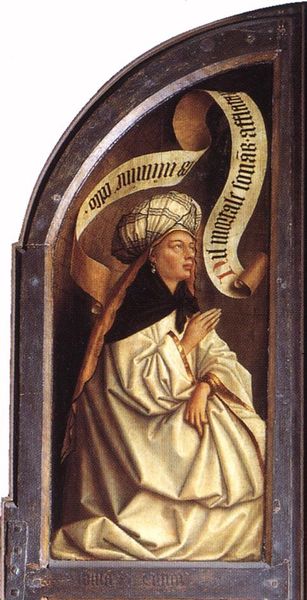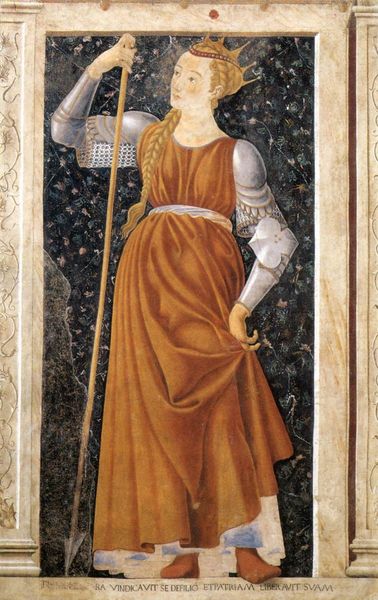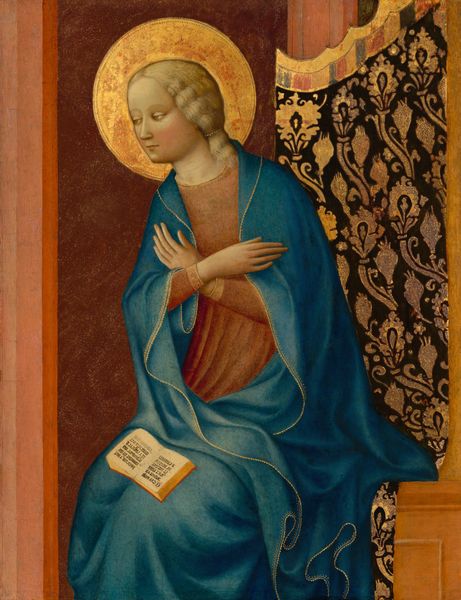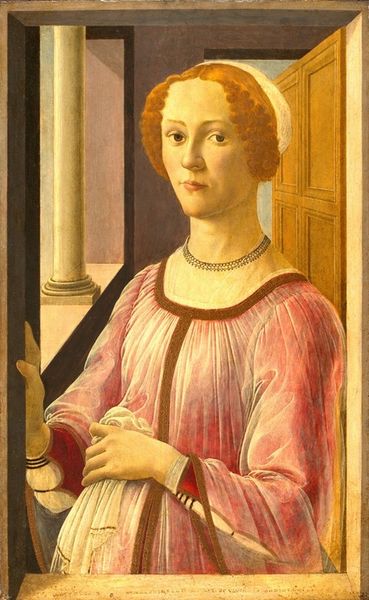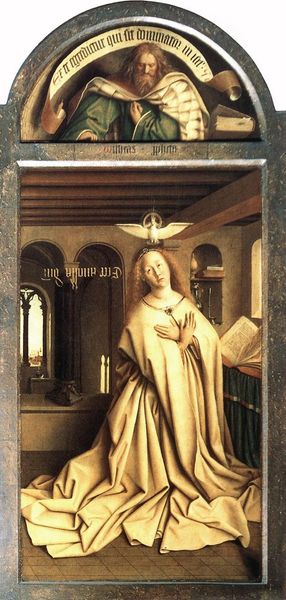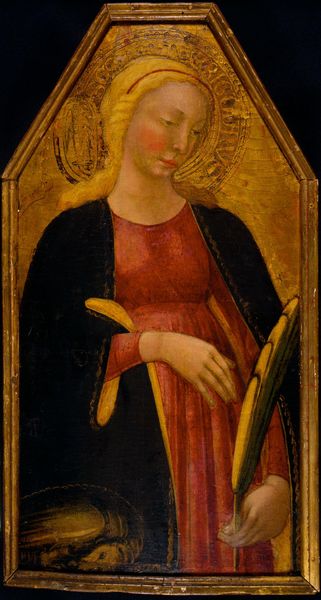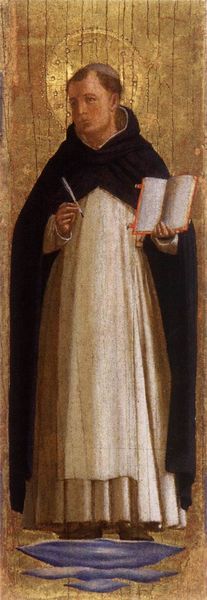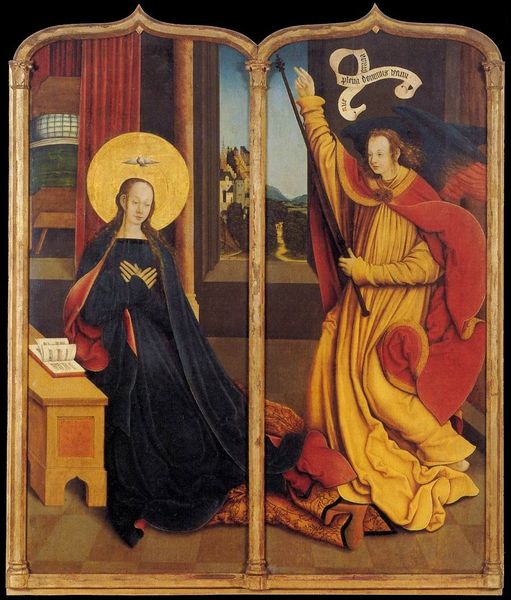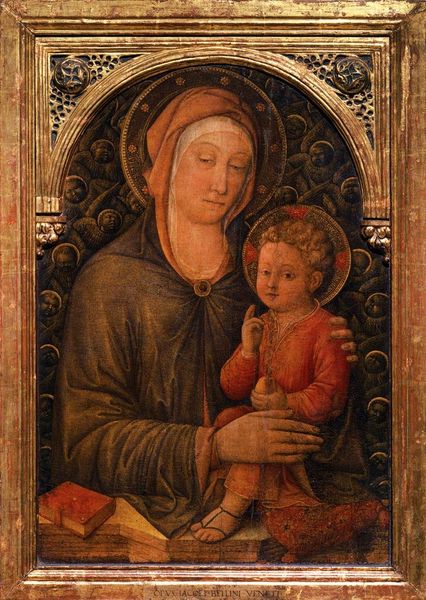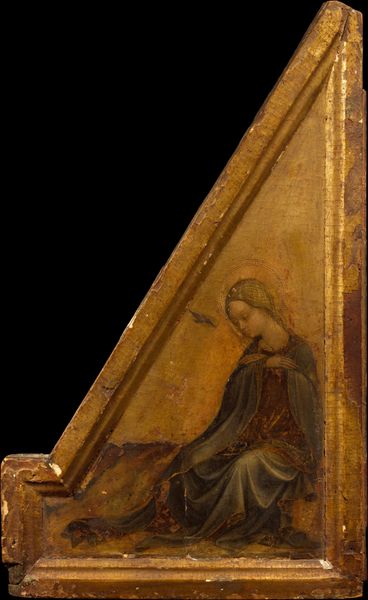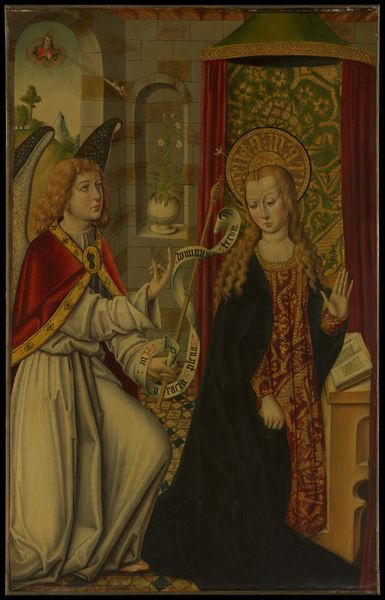
painting, oil-paint
#
portrait
#
painting
#
oil-paint
#
figuration
#
oil painting
#
roman-mythology
#
portrait head and shoulder
#
framed image
#
underpainting
#
history-painting
#
northern-renaissance
#
lady
Copyright: Public domain
Jan van Eyck painted ‘The Cumaean Sibyl’ sometime before 1441, as part of the Ghent Altarpiece here in St. Bavo Cathedral. Van Eyck was working at a time when women's roles were rigidly defined, yet here he depicts a figure of immense power. The Sibyls were female figures from classical antiquity, oracles who were believed to have prophetic abilities. The Cumaean Sibyl, in particular, was the priestess presiding over the Apollonian oracle at Cumae, a Greek colony located near Naples, Italy. Van Eyck’s Sibyl, adorned in rich fabrics and an elaborate headdress, is a portrait of nobility. Yet the words swirling around her head remind us of her true power. To have the gift of prophesy was also to bear its burden. What does it mean to carry the weight of foresight? The artist acknowledges both the privilege and the pain of inhabiting such a role. Van Eyck uses his tremendous skills to paint an icon of female strength, leaving us to consider the complexities of power and the cost of knowledge.
Comments
No comments
Be the first to comment and join the conversation on the ultimate creative platform.
